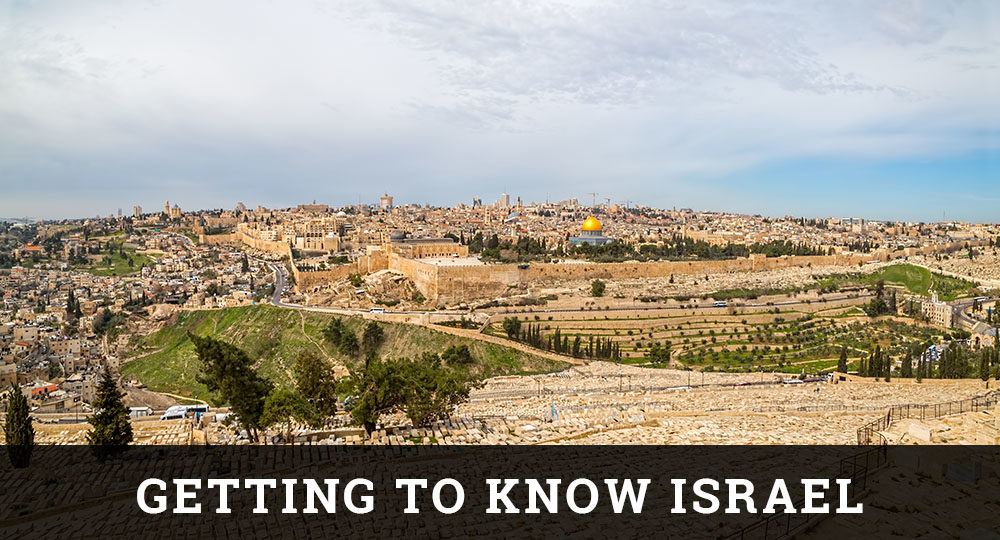A Land Flowing With Milk and Honey
Leviticus 25:8–17 provides for one of the more interesting statutes in Israel’s history. Beyond the rest that the land and the people were to receive every seven years, when the seventh seven came along, there was to be an additional year of rest and recuperation—the year of jubilee, the 50th year. As much as you might think that the children of Israel would look forward to such a rest, especially when the observance of the statute would bring the blessing of the Lord upon them and the land, there was apparently little desire to comply (see Jer. 25:1–12, esp. vv. 11–12; cp. 29:10–14; Dan. 9:1–2). The subsequent journey into Babylonian captivity that God imposed upon the southern kingdom of Judah demonstrates how important this statute was to the Lord and how grieved and angered He was when Israel failed to comply.
God gave this statute to Moses on Mount Sinai (Lev. 25:1), which is located in the southern portion of the Sinai peninsula a very barren terrain. It stands in significant contrast to the terrain and agricultural setting in which the children of Israel were to practice its provisions. Most likely it was not hard for the Israelites to imagine giving the desert a rest, but it turned out to be quite another matter when they settled the land they had been told was “flowing with milk and honey” (Ex. 3:8, 17).
What exactly does the term a land flowing with milk and honey mean? First, we must consider the source of the milk and honey and then examine its implications for the land. When the children of Israel first came out of Egypt, the only occupation they knew well, other than brick-making, was one they had inherited from the patriarchs. Genesis 46:28–34 relates that Jacob’s sons were all herdsmen. Further, that is all they knew from their youth (v. 34). There are frequent references to Jacob’s sons tending flocks of goats and sheep when they returned to the land. Then hundreds of years later, when God called Moses to bring Israel up out of Egypt, He promised the children of Israel that He would bring them into a land “flowing with milk and honey.”
The 12 tribes brought with them an abundance of domesticated cattle (sheep and goats). After surviving the sparse forage of the Sinai/Negev region, they drove their cattle through the lush trans-Jordan plateau. Rich vegetation was so abundant that two and a half tribes wanted to remain in the region and continue to raise their herds on its vast provisions (Num. 32:16–27). Simply put, more vegetation meant more herds, which meant more milk. Thus, whether they were on the east or west side of the Jordan this new land that God had provided for them was covered with so much vegetation that the natural consequence was a land “flowing with milk …”
For similar reasons, the land also produced abundant honey. The same land that contained ample grass lands was also sprinkled with beautiful and plentiful wildflowers. These, in turn, attracted the bees necessary to produce wild honey. It was apparently so abundant that Solomon had to warn against eating too much of it (Prov. 25:16). But because the honey was wild, it was there just for the taking (Samson and others knew of this experience: Jud. 14:8–9; 1 Sam. 14:25–26).
The promise of blessing had an interesting negative twist to it as well. Several times the prophets of Israel foretold times when, because of their enemies’ intrusion into the land, the land would be laid waste, and briars and thorn bushes would grow up. This, in turn, would promote an increase in milk and honey (Isa. 7:21–24). How could this happen? When Israel was defeated and carried off as prisoners (Israel to Assyria and Judah to Babylon), the cultivated land was left unattended. When this occurred, the vineyards and crops were overrun with briars, thorns, other wild flowers, and weeds. This, in turn, allowed for increased grazing land for milk-producing animals and an increase in honey as the bees pollinated the thriving wildflowers.
Thus, one way or another, God provided for the land to continue to flow with milk and honey. It is quite possible, therefore, that one of the reasons God wanted the land to have a rest (whether during a sabbath year or the Jubilee year) was to allow the animals and vegetation to thrive, allowing Israel to remain a land “flowing with milk and honey.”








